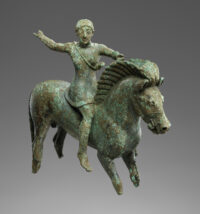
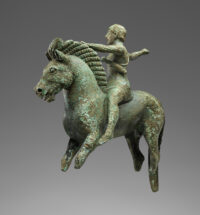
“Although bordering on Greece and sharing the Adriatic coast with Italy, Albania is a country whose ancient heritage is less familiar to American museum audiences,” says Timothy Potts, Maria Hummer-Tuttle and Robert Tuttle Director of the Getty Museum. “Focusing on a single, precious object allows us to offer visitors a glimpse into the close artistic connections within the Mediterranean world, and to highlight the complex process of restoration by the Museum’s antiquities conservators, who carried out the analysis and treatment of this delicate archaeological find in collaboration with colleagues at the Albanian Institute of Archaeology in Tirana.”
The statuette was discovered in 2018 during an excavation of an outpost of the ancient Corinthian colony of Apollonia near the modern-day village of Babunjë, only it wasn’t found in the planned dig. Archaeologists from the international team were watching a local farmer plow his onion field when they spotted something in the churned soil. They stopped the plow, preventing the object from meeting a twisted end, and called in their colleagues to explore its archaeological context.
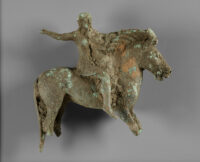
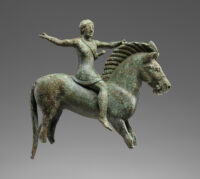
This suggests that the bronze horseman may also be of Corinthian origin. Corinth was an important center of metalworking in Archaic Greece, and the few horse and rider figures in bronze that are known are believed to have been made in Corinth. The discovery of an exceptional example of a bronze horseman in a remote outpost with almost exclusive links to Corinth supports this hypothesis.
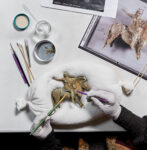


For the most secure possible display, the conservation team created a 3D-printed replica of the statuette to design a bespoke mount that fits the object perfectly. The statuette is now being exhibited on that mount in a case with a dry microclimate to prevent any further corrosion of the metal. The horseman will be at the Getty Villa through January 29th, 2024.
* This article was originally published here








No comments:
Post a Comment